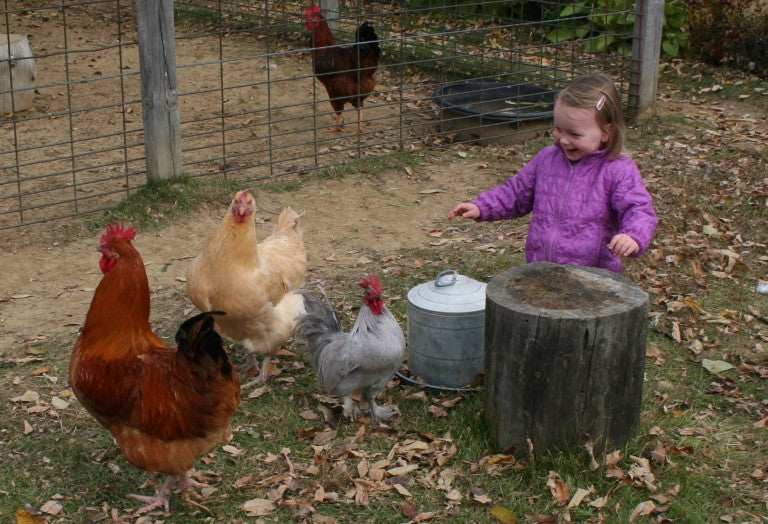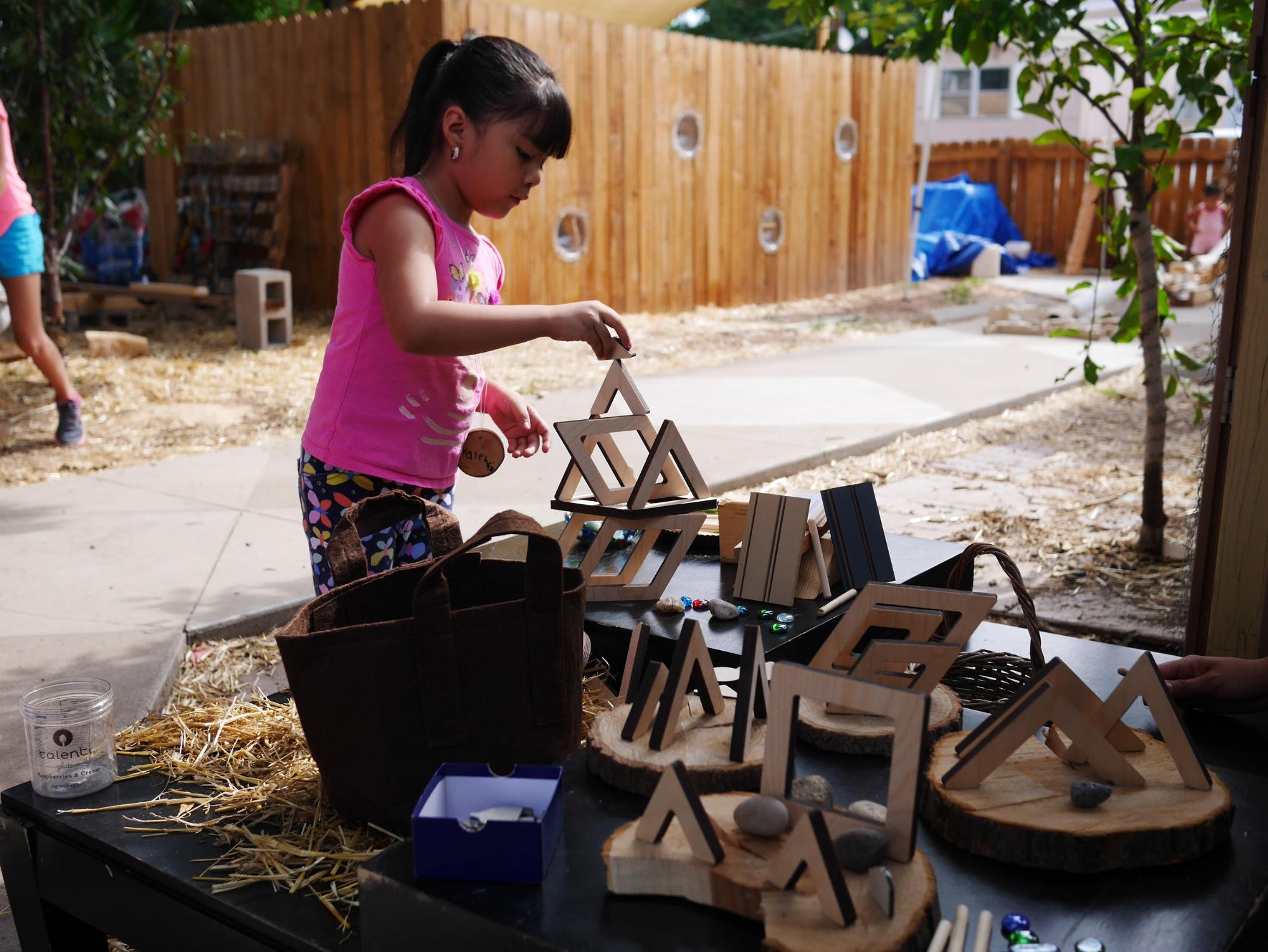Raising chickens and ducks in classrooms is not a new trend - in fact, raising poultry in preschools has been going on for ages, as far as we can tell. A new state health rule in Colorado, however, bans poultry from classrooms with preschool aged children based on fear of communicable diseases, specifically salmonella. Just how legitimate is that fear, though?
Kodo has always been a fan of chickens - several of our employees even raise them at home with their families! We also believe in letting children get dirty and hands-on with our natural world and its creatures great and small. While we think that bumps, bruises, and scraped knees are a regular part of childhood, we do take the safety and health of our children seriously. So, we decided to do some research around the issue of chickens in classrooms to find out if there truly is a legitimate reason to ban our youngest learners from some of nature’s greatest teachers.
Sources and More Information: Classroom Embryology Projects: Health Risk Myths and Facts Change.org Poultry Petition Center for Disease Control Article: Chickens Face Eviction from Colorado Preschools Colorado Department of Public Health and Environment 6 CCR 1010-7
The Benefits to Raising Chickens at Preschools:
Let’s begin by exploring why this is something we all should even care about - what differences are chickens making in your child’s educational experience? First, there’s the opportunity for children to make connections with our natural world. Many children in urban and suburban settings aren’t exposed to nature on this level. It also helps children understand where our food comes from. A few months back we explored the importance of teaching children where food comes from, a post that was inspired by a child’s answer of “the supermarket” when asked where apples come from. Outside of the practical means of understanding where our food comes from, children can also learn about the following from their feathered friends:- Our relationship with our planet and all its inhabitants
- Respect for other living creatures
- Empathy through caring for another living thing
- The connections in our natural world between plants, animals, and people
- Practice overcoming anxieties, especially animal-related anxieties
- Responsibility - feeding schedules, collecting eggs, keeping chickens safe
- Animal kindness and the ability to identify and stop animal cruelty
- The life cycle; observations from egg to chick to chicken
Identifying the Risks:
The primary concern of the Colorado Department of Public Health and Environment is related to communicable diseases spread by chickens, primarily salmonella. While it’s true that children under 5 are more at risk to contract salmonella than older children are, the only way to get salmonella (short from eating contaminated foods, unrelated to the question at hand), is from contaminated hands contacting mouths. Of course, we all know that young children love putting their hands near their faces, so it is easy to see how one might jump to the conclusion that we need to keep children away from chickens for safety reasons. These facts, however, might make you think twice about the weight of these risks:- Since 1990, there have only been 53 outbreaks of salmonella nationally (~2 per year), resulting in only 5 deaths, or, 0.002% of illnesses leading to death.
- Further, an American’s current odds of getting sick due to salmonella contracted from interactions with live poultry is 0.000054%. Their risk of being hospitalized or suffering a fatality as a result is even less.
- Other animals prone to carrying salmonella have not been deemed unsafe for classrooms, including gerbils, hamsters, mice, other birds, and even fish.
- Many foods are also capable of spreading salmonella and are still served in children’s classrooms, including fruits, peppers, nuts, and, of course, chicken (of the eating variety).
Risk Mitigation:
So yes, there is risk associated with raising chickens around children, but the risk is quite small and simple to mitigate. As the only way a child would contact salmonella from a live chicken would be directly ingesting feces that got onto their hands (gross, but technically true), being diligent about hand-washing, careful chicken handling, and separating chickens from areas where you eat should suffice in keeping salmonella at bay. Here are some simple steps that can be taken to eliminate risk of salmonella:- Establish classroom rules before introducing children to chickens, and have the rules posted in visible areas throughout your preschool.
- Make sure children understand they must wash their hands with soap after any contact with chickens, chicken related items (coop, eggs, feeders, toys, etc.), and that they must not kiss chickens or nuzzle chickens close to their faces.
- For extra precaution, gloves can be required when handling chickens and/or fresh eggs
- Eggs used for cooking should be thoroughly washed before children use them in a cooking project, as eggshells may carry salmonella as well
- Keep chickens away from any eating spaces, such as outdoor picnic tables.
- Supervise children with chickens at all times. Do not allow access to chickens when no adult is present.
- Have an adult supervise post-chicken hand washing until you are confident that children are using soap and water and doing a thorough job.
Conclusion:
Given the evidence and the ease of risk mitigation, Kodo supports raising chickens in preschools and settings with young children, given proper safety procedures are in place. We have chosen to sign a petition on change.org to add our voice to the growing number of individuals looking to revoke the ban on poultry in Colorado preschools. If you’d like to sign the petition, or to find even further resources about the issue, you can do so at the change.org petition page. So, what do you think? Would you be concerned about chickens in your child’s preschool? Let us know in the comments section below. Every opinion is valued and thoughtfully considered, and we’d like to hear yours!Sources and More Information: Classroom Embryology Projects: Health Risk Myths and Facts Change.org Poultry Petition Center for Disease Control Article: Chickens Face Eviction from Colorado Preschools Colorado Department of Public Health and Environment 6 CCR 1010-7


Share:
15 Museums Supporting STEM for Preschool
Kodo Awarded GEI Seal of Endorsement for Educational Products